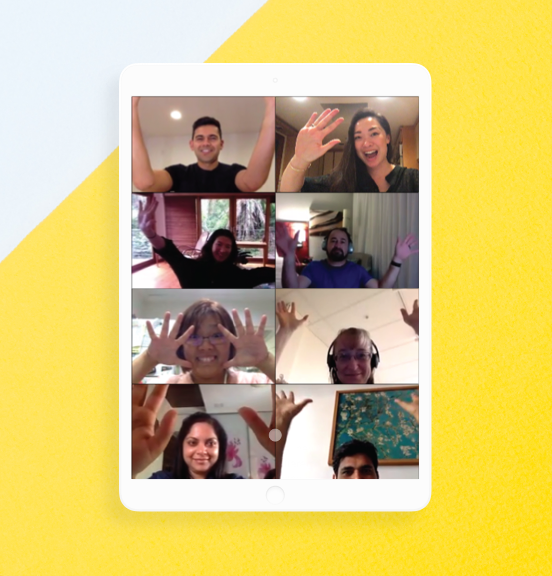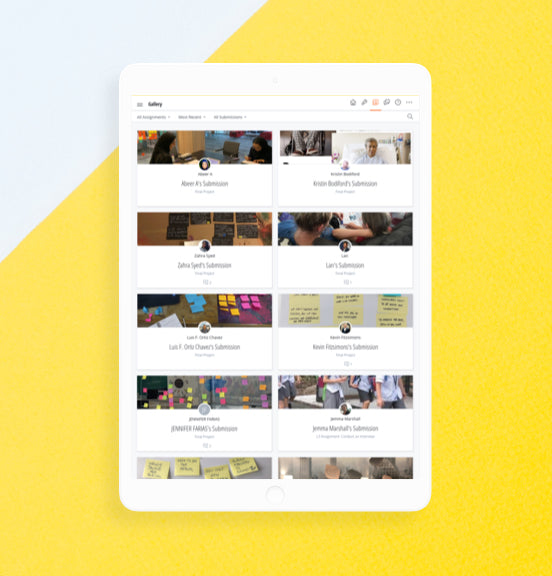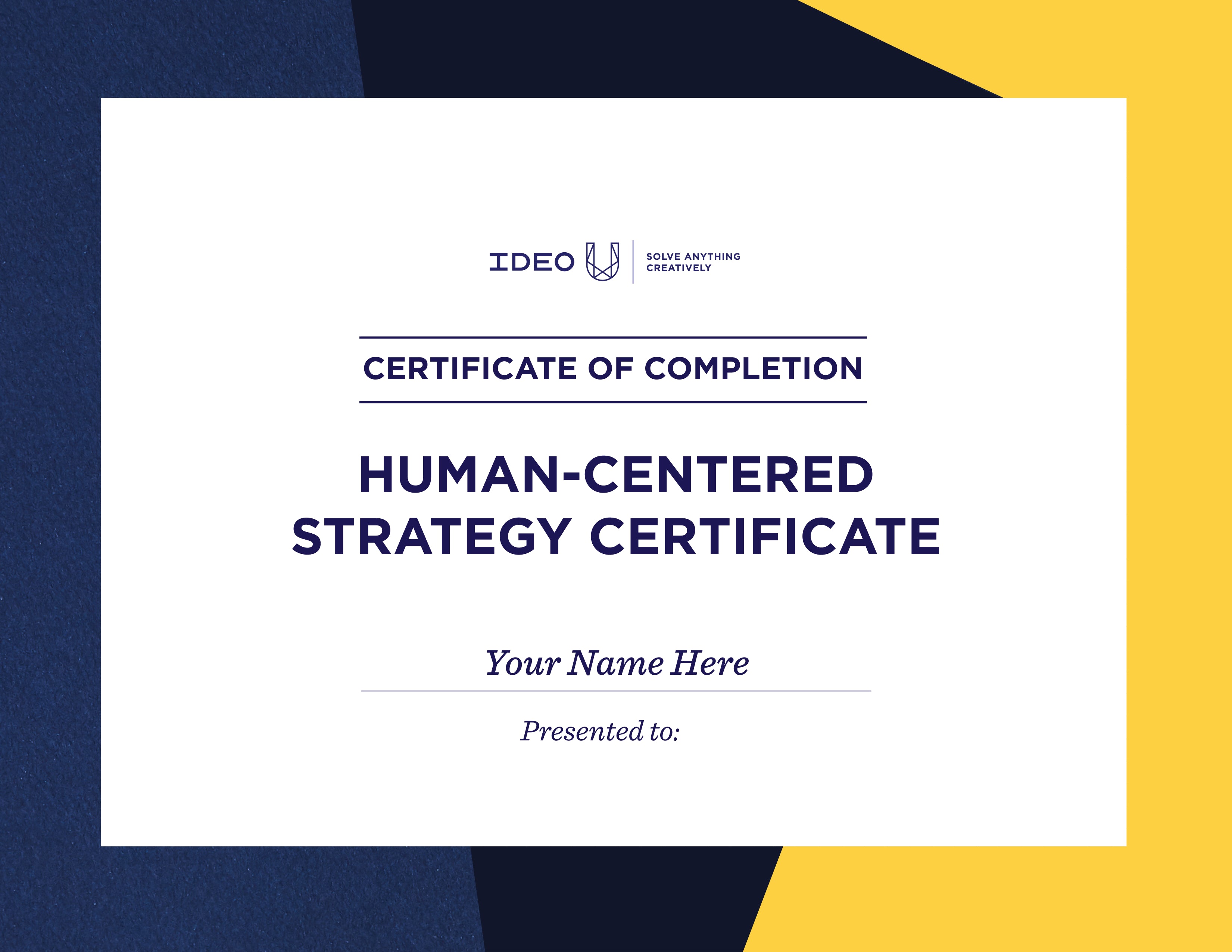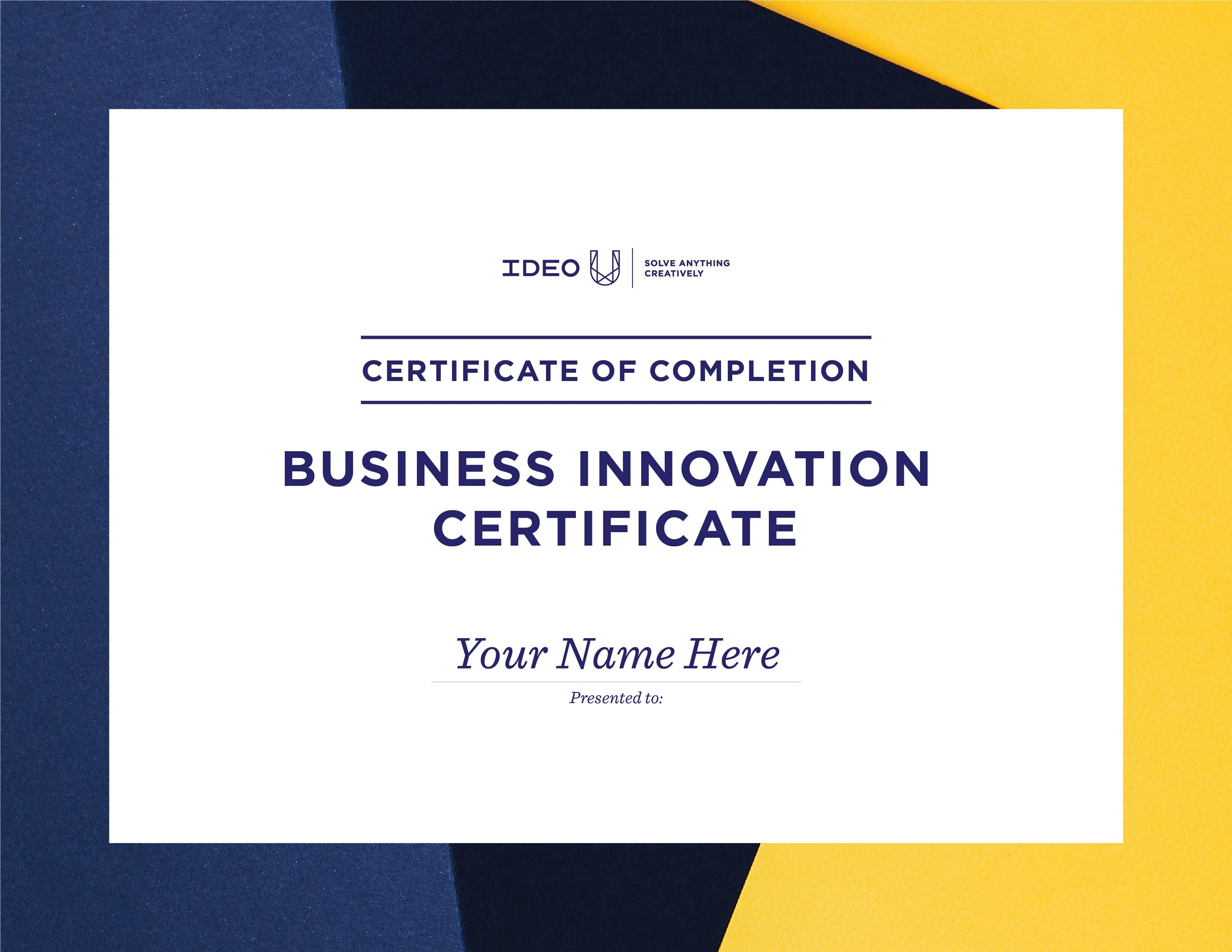Go Deeper with Certificate Programs
Designing Strategy is part of a two certificate programs:
What You'll Learn
 Week 1: Introduction
Week 1: Introduction
Watch a sneak peek
-
Designing Strategy—A sneak peek of the course
4 Video Lessons
-
Strategy is a Creative Act For Everyone
- Making Choices—An introduction to strategy
- The Strategy Process Map—A framework for navigating strategy
- The Strategy Choice Cascade—A way to articulate strategy
1 Assignment
-
Identify the Problem and Frame A Strategic Question: Outline the current Strategy Choice Cascade for your organization, describe the strategy problem that you’re facing, and craft a “How might we” question to articulate the problem.
5 Discussions
-
What brought you to this course, and why have you chosen to learn the skills of designing strategy?
-
Which steps of the Strategy Process Map do you feel most and least comfortable with? Why?
-
Have you ever had a difficult time communicating a strategy or strategic possibility in the past? If so, why?
-
Did anything surprise you about how Westrock uses the Strategy Choice Cascade?
-
What choices are you making in your current role? Can you see how this might be considered strategy?
 Week 2: From Problems to Possibilities
Week 2: From Problems to Possibilities
4 Video Lessons
- Setting the Stage for Strategy—Define a problem, frame a strategic question
- Framing a “How might we…” Question
- Invent the Future—Generate strategic possibilities
- Shape Strategic Possibilities—Apply “Where to Play” and “How to Win”
1 Assignment
-
Generate Possibilities: Push your thinking to brainstorm new strategic possibilities that answer the question you framed for your organization. Articulate those possibilities in more detail using the elements “Where to Play?” and “How to Win?” from the Strategy Choice Cascade.
3 Discussions
-
Framing a “How might we” question can sometimes feel tricky, but it shouldn’t be the thing that slows your strategy work down. What are some ways that you’ve found that can help you frame a question?
-
What strategy possibilities did you come up with for your practice case? Are any particularly inspiring and/or radical that you’d like to share? How did it feel to brainstorm and dream big?
-
Think about two organizations that compete with one another–how would you describe their choices? What’s unique about them?
 Week 3: What Would Have to Be True?
Week 3: What Would Have to Be True?
3 Video Lessons
- What Would Have to be True?—The most important question in strategy
- Surfacing Conditions—Ask “What would have to be true?”
- Identifying Barriers—Choose what to test
1 Assignment
-
What Would Have to Be True and Barriers: Think about the “What would have to be true?” conditions for each of your strategic possibilities, then identify your early hunches about which ones might be barriers.
2 Discussions
-
Have you ever been in a situation where it was difficult to gain alignment? Were you able to move past this? If so, how did you get “unstuck”?
-
Think of a choice that you’re facing in life or work, and the different options that you’re considering for that choice. How might asking “What would have to be true?” to make each a great option, help you to see them differently?
 Week 4: Test to Learn
Week 4: Test to Learn
4 Video Lessons
- Prove It—Two words that can kill innovation
- Test for the Future—Design and conduct strategy tests
- Testing in Strategy
- One Example of a Guerilla Test
1 Assignment
-
Test to Learn: Design and plan out strategic tests that you can conduct to learn more about the barriers you identified as part of the strategy process.
1 Discussion
-
What types of guerrilla tests feel familiar to you? What are you most excited to try?
 Week 5: Make a Choice
Week 5: Make a Choice
4 Video Lessons
- Making a Strategic Choice
- Make a Real Choice
- Look to the Future
- Telling the Story of Strategy
1 Assignment
-
Decide: Look back across the entire strategy process and take stock of some of the big takeaways from the course, and think about how will you continue to practice strategy after the course is complete.
3 Discussions
-
What do you think will be the most challenging part of deciding on your new strategy? Are you stuck between any possibilities?
-
What are some ways in which this course has changed your view on strategy design? How will you use your new perspective, or how have you already started using it?
-
Have you presented strategy work in the past? What is successful? What were some techniques or tips that helped or hindered this work for you?
Meet Your Instructors
Jennifer Riel
Partner & Global Director of Strategy at IDEO
Jennifer has led strategy processes at large public and private sector organizations around the world. She advises senior leaders at several Fortune 100 companies and teaches creative problem solving and innovation at the Rotman School of Management. She co-authored Creating Great Choices with Roger L. Martin.
Roger Martin
Strategy Advisor & former Dean of the Rotman School of Management
Roger is a trusted strategy advisor who's worked with CEOs of companies including Procter & Gamble, Lego, and Ford. He has published 11 books, including Creating Great Choices and Playing to Win, and is recognized as a leading management thinker. Roger has an MBA from Harvard Business School.
Frequently Asked Questions
We offer three types of courses: self-paced courses, cohort courses, and certificate programs. Cohort courses run on a set calendar, with fixed start and end dates. Course learning is self-paced within those dates and requires approximately 4-5 hours per week over 5 weeks. Courses consist of videos, activities, assignments, access to course teaching teams, and feedback from a global community of learners. There are also optional 1-hour video Community Conversations, held weekly by the teaching team.
All of our cohort courses are fully online, so you can take them from any time zone, anywhere in the world. With our cohort course experience, while you'll be learning alongside other learners, you'll still have the flexibility to work at the pace that fits your own schedule. There aren’t mandatory live components, so you don't have to worry about having to log in at a specific time. At the same time, you'll have access to a teaching team, which is composed of experts in the field who are there to provide you feedback, and there are also plenty of options to connect with your fellow learners.
Course instructors have a strong presence in the courses through the course videos, but they're not actively providing feedback or holding direct conversations with our learners. We have a teaching team to ensure that you have the feedback, guidance, and support you need to learn successfully in your course. Our teaching team members are design practitioners that have experience applying course methods and mindsets in a wide variety of contexts around the world.
Our teaching team consists of teaching leads and teaching assistants, who are experts in their fields. Many of them have been with IDEO U for many years, and we have selected those who have direct experience with applying the course methods and mindsets in all sorts of contexts around the world. They all go through multiple training sessions by our instructional designers on not only on the subject matter, but also on how to create safe and collaborative learning experiences and environments.
Community Conversations are one-hour live video conversations hosted by the teaching team on Zoom. These happen once per week, with each one having two to three time options to accommodate different time zones. Each week focuses on the lesson that you’ve just gone through, so the output and the content depend on the specific lessons. You'll have the opportunity if you work together with your peers on the tools and mindsets from the course, reflect on what you’ve learned, and also address any challenges that you might be going through.
All course materials, including videos, activities, and assignments will be available while you are enrolled in a course. During the 5 weeks of the course, you will have full access to our learning platform and can refer back to it any time. You will only have access to the course materials while you are enrolled.
Assignments must be submitted during the 5-week course duration in order for you to receive a certificate of completion.
Absolutely! We have had many teams go through our courses together. For those taking our courses as a team, we provide a number of additional benefits:
1. A Team Learning Guide, developed to provide your team with resources to facilitate offline discussions that complement the in-course experience.
2. A Manage Learners function, which provides visibility into your team's progress within the course.
3. The ability to create a private Learning Circle, which is a closed space for discussion on the learning platform specifically for your team.
For more information, visit our Team Learning page.
We offer a discount when you enroll in multiple courses at the same time through some of our certificate programs, including Foundations in Design Thinking, Business Innovation, Human-Centered Strategy, and Communicating for Impact.
You can also enter your email address at the bottom of this page in order to receive updates on future offers or possible discounts.
We also offer financial assistance for teachers, students, nonprofit workers, and those in need of government assistance – check out the financial aid application for more information and to apply for financial support. Please allow some time for the verification to process, so plan ahead if you are looking to join a course soon.
After completing a cohort course, you will be able to add it to your “licenses and certifications” on LinkedIn.
We also have certificate programs that consist of multiple courses. After completing a certificate, you will receive a certificate of completion via email as a downloadable PDF within 1-2 weeks of completing the final required course. Certificates are configured for uploading and sharing on LinkedIn.
You can purchase a course on our website using a credit card, PayPal, or Shop Pay. For US customers, we also offer installment plans at checkout if you use the Shop Pay method of payment.
We typically are not able to accommodate bank transfer or invoicing. However, if your order includes 10 seats or more, please contact hello@ideou.com and our team will be happy to review your request.
Collaborate with a Global Community
Work with Expert Coaches
Our teaching team has extensive applied industry knowledge. They'll help deepen your understanding and application of the course content by facilitating written discussions, live video moments, and assignment feedback.
Expand Your Network
Join virtual live discussion groups for deeper conversation, reflection, and connection led by teaching team members and available multiple times a week across time zones.
Receive Feedback
Gain tips, techniques, and a downloadable feedback guide; and share and receive feedback on assignments from peers.



What Others Are Saying
Designing Strategy
Cohort Course“Traditionally strategy is about creating a plan and roadmap for getting to a desired future state. This approach to strategy will help you make decisions today! It’s more about the choices you make today based on signals of the future than about the future itself.”
Designing Strategy
Cohort Course“This course was tremendously valuable in terms of explaining the concepts and walking us through practice and real-life case scenarios. I found myself applying what I learned in my day-to-day without even thinking about it. It has changed the way I think on a deeper level.”
Designing Strategy
Cohort Course“The concepts are solid, the faculty is credible (if not outright impressive), and the material is presented in an effective and efficient way. The learning community is engaged and supportive, and the tech tool is professional.”
Designing Strategy
Cohort Course“This course brought a new perspective to traditional strategy building sessions. The concept of seeking external validation prior to selecting a strategic choice will challenge old ways of thinking.”
Learners Also Purchased
-
Designing a Business
Build and test new business ideasCohort Course 5 Weeks- Regular price
- $799
- Sale price
- $799
- Unit price
- per
-
Cultivating Creative Collaboration
Learn to lead collaborative teams from Mike Peng, CEO of IDEOCohort Course 5 Weeks- Regular price
- $799
- Sale price
- $799
- Unit price
- per
-
Human-Centered Service Design
Design the moments that matterCohort Course 5 Weeks- Regular price
- $799
- Sale price
- $799
- Unit price
- per

Enroll As a Team
The practice and application of design thinking, innovation, and creativity is highly collaborative and team based—which is why we believe that learning is better together. Take a course as a team and develop new skills and mindsets, have deeper discussion during course kickoff and debrief sessions, and build a shared understanding.










